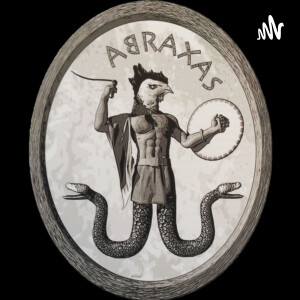
Professor Tony Burke: Ph. D. (1995-2001) University of Toronto, Centre for the Study of Religion https://www.tonyburke.ca/about/ New Testament Apocrypha 1st Edition: https://www.amazon.com/New-Testament-... New Testament Apocrypha 2nd Edition: https://www.amazon.com/New-Testament-... New Testament Apocrypha 3rd Edition: https://www.amazon.com/New-Testament-... Free Apocryphal Text Resource: https://www.nasscal.com/ apocrypha, (from Greek apokryptein, “to hide away”), in biblical literature, works outside an accepted canon of scripture. The history of the term’s usage indicates that it referred to a body of esoteric writings that were at first prized, later tolerated, and finally excluded. In its broadest sense apocrypha has come to mean any writings of dubious authority. A brief treatment of apocrypha follows. For full treatment, see biblical literature: Apocryphal writings. There are several levels of dubiety within the general concept of apocryphal works in Judeo-Christian biblical writings. Apocrypha per se are outside the canon, not considered divinely inspired but regarded as worthy of study by the faithful. Pseudepigrapha are spurious works ostensibly written by a biblical figure. Deuterocanonical works are those that are accepted in one canon but not in all. https://www.patreon.com/GnosticInformant Please Consider joining my Patreon to help finding scholars to bring on. Any amount helps me. Thank you existing Patrons. 2nd Channel: / @latenitegnosis Follow me on Twitter: https://twitter.com/NealSendlak1 Discord: https://discord.com/invite/uWBZkxd4UX All the New Testament apocrypha are pseudepigraphal, and most of them fall into the categories of acts, gospels, and epistles, though there are a number of apocalypses and some can be characterized as wisdom books. The apocryphal acts purport to relate the lives or careers of various biblical figures, including most of the apostles; the epistles, gospels, and others are ascribed to such figures. Some relate encounters and events in mystical language and describe arcane rituals. Most of these works arose from sects that had been or would be declared heretical, such as, importantly, the Gnostics. Some of them argued against various heresies, and a few appear to have been neutral efforts to popularize the life of some saint or other early leader of the church, including a number of women. In the early decades of Christianity no orthodoxy had been established, and various parties or factions were vying for ascendancy and regularity in the young church. All sought through their writings, as through their preaching and missions, to win believers. In this setting virtually all works advocating beliefs that later became heretical were destined to denunciation and destruction. In addition to apocryphal works per se, the New Testament includes a number of works and fragments that are described by a second meaning of the term deuterocanonical: “added later.” The Letter to the Hebrews attributed to Paul, who died before it was written, is one of these; others are the letters of James, Peter (II), John (II and III), and Jude, and the Revelation to John. Fragments include Mark 16:9–20, Luke 22:43–44, and John 7:53 and 8:1–11. All are included in the Roman canon and are accepted by the Eastern Church and most Protestant churches. Heretical movements such as Gnosticism and Montanism spawned a great body of New Testament pseudepigrapha. The existence of such purported scriptures lent great impetus to the process of canonization in the young and orthodox Christian Church. See also various apocryphal works cited above. #gnosticinformant #apocrypha #christianity
More Episodes
 2023-04-22
2023-04-22
 2023-04-22
2023-04-22
 2023-04-22
2023-04-22
 2023-04-22
2023-04-22
 2023-04-22
2023-04-22
 2023-04-22
2023-04-22
 2023-04-22
2023-04-22
 2023-04-22
2023-04-22
 2023-04-22
2023-04-22
 2023-03-27
2023-03-27
Create your
podcast in
minutes
- Full-featured podcast site
- Unlimited storage and bandwidth
- Comprehensive podcast stats
- Distribute to Apple Podcasts, Spotify, and more
- Make money with your podcast
It is Free
- Privacy Policy
- Cookie Policy
- Terms of Use
- Consent Preferences
- Copyright © 2015-2024 Podbean.com





